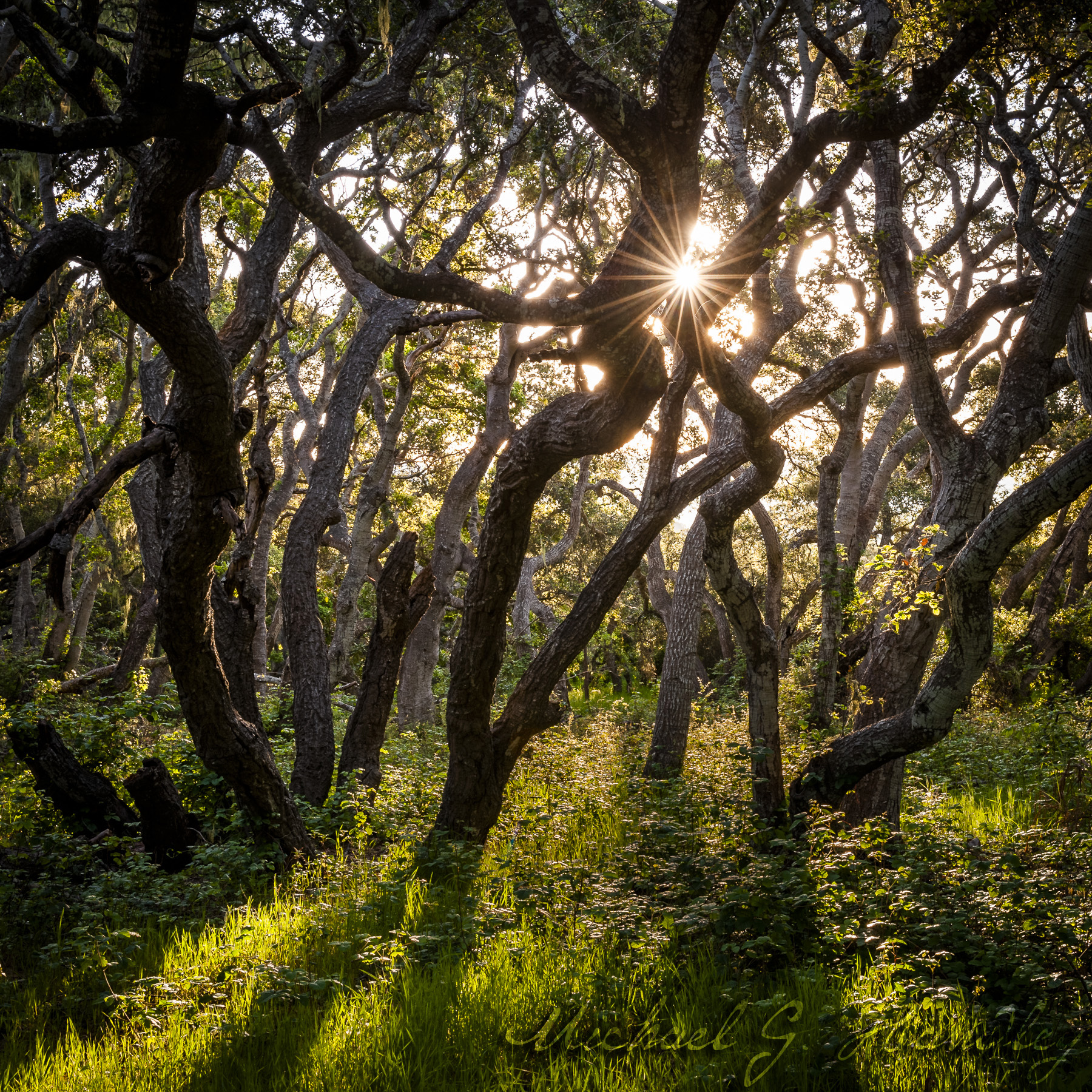Not far from San Luis Obispo, California is a small bedroom community called Los Osos. Close to the “downtown” area is a small grove of California Live Oak trees that are set aside as the Los Osos Oaks State Natural Reserve. The scant 90 acres is home to 800-year old oak trees. The small pullout at the side of the road hardly gives a clue as to what one sees by venturing onto the several paths that wind and meander among the gnarled giants.
Sunrise among the live oaks
I first discovered this park several years ago while scouting a location to shoot engagement photos for my son. Because the grove is situated so close to the ocean, it is often shrouded in fog that adds a magical and mystical mood to photographs. When I visited the park several weeks ago, it happened to be on the rare day when there wasn’t any fog present. The lack of fog made my work much more difficult. To manage the terrific dynamic range of the rising sun cutting through the upper canopy of the oaks, I had to shoot the same scene with multiple exposures, blend the images together in software that creates high dynamic range images, and then further tweak the images to make them look more natural and portray the mood I felt on the morning I walked through this forest.
California Live Oak Sunburst
Further complicating my photography that morning was the natural clutter one finds in almost any woods. Here in Utah, I often battle composing engaging scenes in an aspen grove. The chaos found on the forest floor is my greatest challenge any time I pull my camera out in the woods. It’s simply not possible to clear away the fallen deadwood, bracken, and misplaced plant growth. The forest is the given that I work around. I spend most of my time isolating scenes that create a pleasing composition. There is very little “digital cleanup” in any of these images. I might remove a small distracting branch here or there, but no major surgery.
The inner meadow, Los Osos Oaks State Natural Reserve






































































































